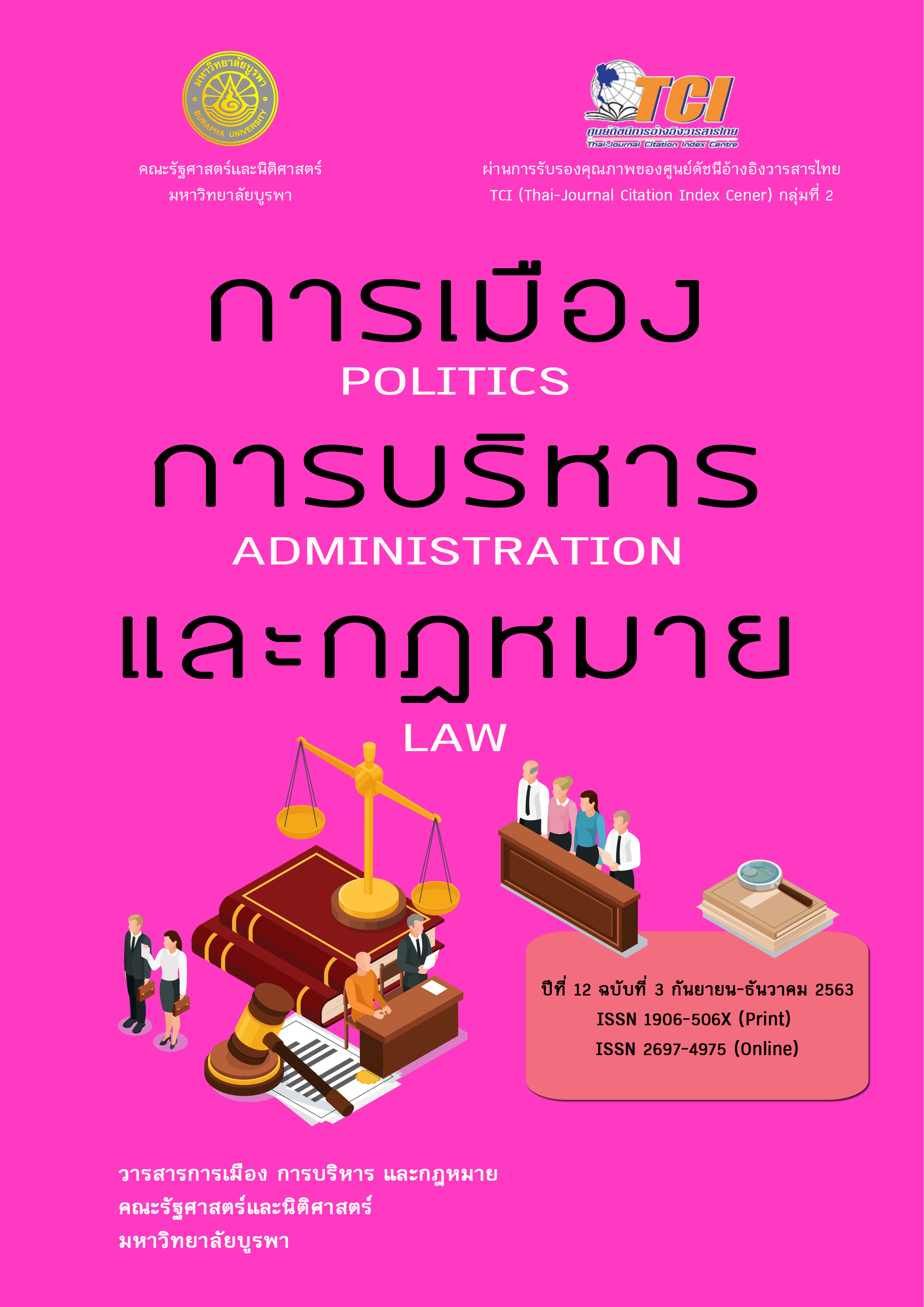Learning Organization Effected to Provincial Administration Organization
Keywords:
Learning organization, Administration, Provincial administration organizationAbstract
This research aimed to 1) studied performance level of Provincial Administrative Organization 2) studied learning organization’s confirmatory level of Provincial Administrative Organization and 3) studied learning organization’s confirmatory factors which effected to performances of Provincial Administrative Organization. This research used quantitative methodology which population are officers who worked in Provincial Administrative Organization, sample size is 400, Multi-stage Sampling, collected data by questionnaire and analyzed by descriptive statistics and Structural Equation Modeling (SEM) The results founded that 1) performance level of Provincial Administrative Organization in total is in high level (avg. = 3.61) which educational performance is higher than financial performance. 2) learning organization’s confirmatory level of Provincial Administrative Organization in total is in high level ( = 3.58) which the highest is “empowering people according to vision”, “creating strategic leadership for learning”, “creating a system to store and exchange learning”, “create continuous learning opportunities”, “promoting inquiries and conversations”, “stimulating collaboration and learning together as a team” and “linking the organization to the environment” respectively. 3) learning organization’s confirmatory factors which are positive effect to financial performances of Provincial Administrative Organization are “promoting inquiries and conversations” (1.99) and “creating strategic leadership for learning” (0.19). Factors which are negative effect to financial performances of Provincial Administrative Organization are “creating a system to store and exchange learning” (-1.77) and “empowering people according to vision” (-0.47). For factor which is positive effect to educational performances of Provincial Administrative Organization is “empowering people according to vision” (0.39) and factors which is negative effect to educational performances of Provincial Administrative Organization is “create continuous learning opportunities” (-0.26). This research provides important policy suggestion is should encourage the Provincial Administrative Organizations to adopt the learning organization guidelines as operational guidelines.
References
เฉลิมฤทธิ์ สาระกุล และสุรางค์ เทพศิริ. (2556). ปัจจัยที่มีผลต่อการเป็นองค์การเรียนรู้ของธนาคารกรุงไทย จำกัด (มหาชน) สังกัดสำนักงานเขตสระบุรี. งานนิพนธ์ธุรกิจมหาบัณฑิต, คณะบริหารธุรกิจ, มหาวิทยาลัยเทคโนโลยีราชมงคลธัญญบุรี.
เอกพล สุมานันทกุล, ภารดี อนันตนาวี, สิทธิพร นิยมศรีสมศักดิ์ และเรณา พงษ์เรืองพันธ์. (2555). การวิจัยเชิงปฏิบัติการแบบมีส่วนร่วมการพัฒนารูปแบบองค์การแห่งการเรียนรู้ของโรงเรียนสุมานัน จังหวัดสมุทรปราการ. วารสารการบริหารการศึกษา, 6(1).
De Villiers, W. A. (2007). The Learning Organization: Validating a Measuring Instrument. Journal of Global Strategic Management, 1(1), 115-123.
Garvin, D. (1993). Building a learning organization. Harvard Business Review, 7(4), 78-91.
Garvin, D. A. et al. (1993). Is Yours a Learning Organization?. Harvard Business Review, 86(3), 109-116.
Marquardt, M. (1996). The global advantage: How world-class organizations improve performance through globalization. Huston, TX: Gulf Publishing.
Marsick, V., & Watkins, K. (2003). The learning organization: An integrative vision for HRD. Human Resource Development Quarterly, 3(4), 353-359.
Pedler, M., Burgoyne,J. and Boydell, T. (1997). The learning company: A strategy for sustainable development (2nded.). London: MacGraw - Hill.
Senge, P. (1990). The Fifth Discipline: The Art and Practice of the Learning Organization. New York: Double day Currency.
Senge, P., et al. (1994). The Fifth Discipline Field Book Strategies and Tools for Building a Learning Organization. New York: Currency Doubleday.
Yamane, T. (1973). Statistics: An Introductory Analysis (3rd ed.). New York: Harper and Row Publications.
Hair, et al. (1998). Multivariate Data Analysis with Readings. Englewood Cliffs, NJ: Prentice-Hall.
Bollen, K. A. (1989). Structural Equations with Latent Variables. New York: John Wiley and Sons, Inc.
Sorbon, D. (1996). LISREL 8: User’s Reference Guide. Scientific Software International.
Hussein, N., Mohamad, A., Noordin, F., & Ishak, N. A. (2014). Learning Organization and its Effect On Organizational Performance and Organizational Innovativeness: A Proposed Framework for Malaysian Public Institutions of Higher Education.
Amsterdam, Netherlands: Elsevier Ltd.






